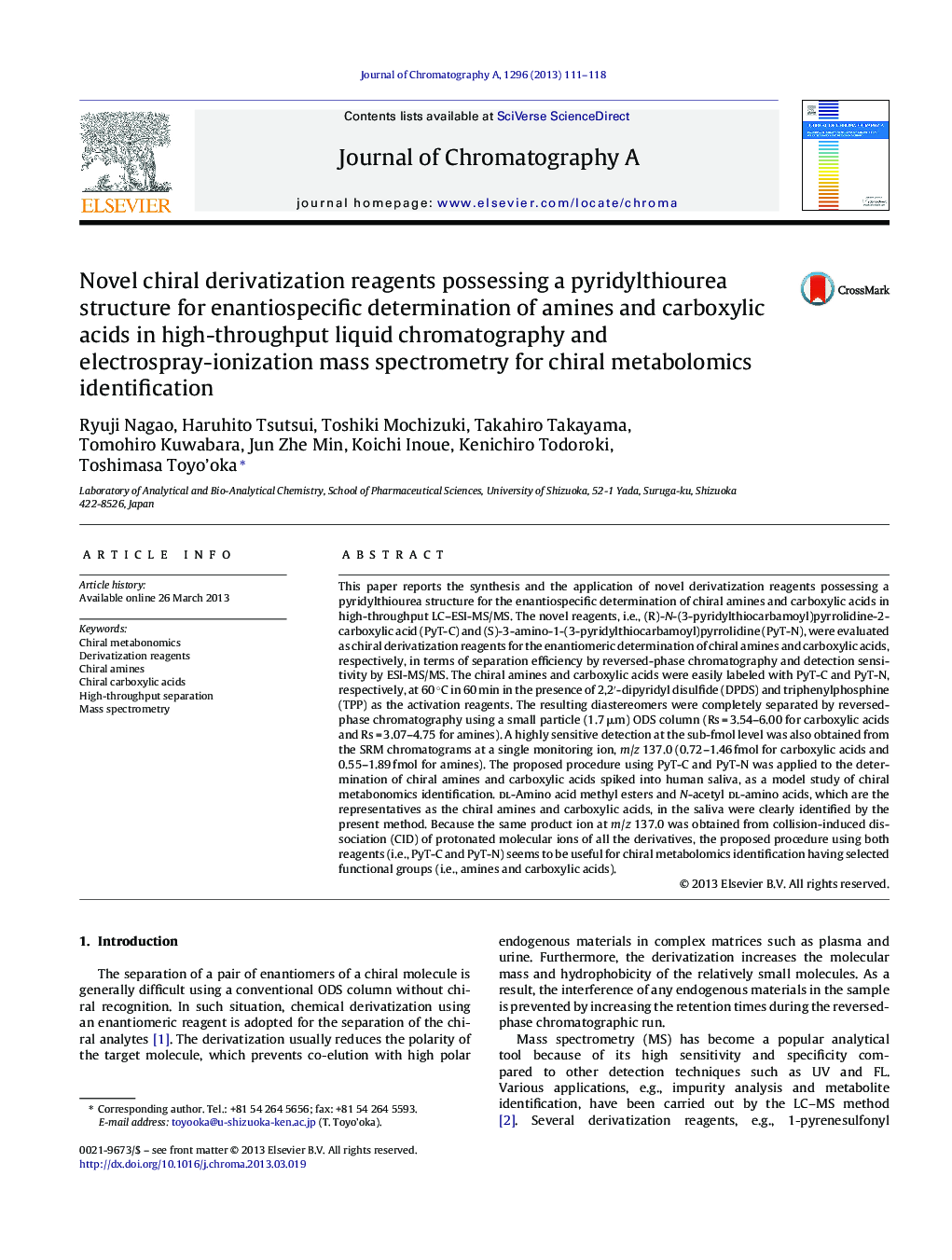| Article ID | Journal | Published Year | Pages | File Type |
|---|---|---|---|---|
| 1200145 | Journal of Chromatography A | 2013 | 8 Pages |
•Novel chiral derivatization reagents (PyT-C and PyT-N) were synthesized.•Chiral amines and carboxylic acids were easily labeled with PyT-C and PyT-N.•Resulting diastereomers were completely separated and sensitively detected.•Same product ion at m/z 137.0 was obtained from collision-induced dissociation.•Proposed procedure using PyT-C and PyT-N was applied to human saliva.
This paper reports the synthesis and the application of novel derivatization reagents possessing a pyridylthiourea structure for the enantiospecific determination of chiral amines and carboxylic acids in high-throughput LC–ESI-MS/MS. The novel reagents, i.e., (R)-N-(3-pyridylthiocarbamoyl)pyrrolidine-2-carboxylic acid (PyT-C) and (S)-3-amino-1-(3-pyridylthiocarbamoyl)pyrrolidine (PyT-N), were evaluated as chiral derivatization reagents for the enantiomeric determination of chiral amines and carboxylic acids, respectively, in terms of separation efficiency by reversed-phase chromatography and detection sensitivity by ESI-MS/MS. The chiral amines and carboxylic acids were easily labeled with PyT-C and PyT-N, respectively, at 60 °C in 60 min in the presence of 2,2′-dipyridyl disulfide (DPDS) and triphenylphosphine (TPP) as the activation reagents. The resulting diastereomers were completely separated by reversed-phase chromatography using a small particle (1.7 μm) ODS column (Rs = 3.54–6.00 for carboxylic acids and Rs = 3.07–4.75 for amines). A highly sensitive detection at the sub-fmol level was also obtained from the SRM chromatograms at a single monitoring ion, m/z 137.0 (0.72–1.46 fmol for carboxylic acids and 0.55–1.89 fmol for amines). The proposed procedure using PyT-C and PyT-N was applied to the determination of chiral amines and carboxylic acids spiked into human saliva, as a model study of chiral metabonomics identification. dl-Amino acid methyl esters and N-acetyl dl-amino acids, which are the representatives as the chiral amines and carboxylic acids, in the saliva were clearly identified by the present method. Because the same product ion at m/z 137.0 was obtained from collision-induced dissociation (CID) of protonated molecular ions of all the derivatives, the proposed procedure using both reagents (i.e., PyT-C and PyT-N) seems to be useful for chiral metabolomics identification having selected functional groups (i.e., amines and carboxylic acids).
